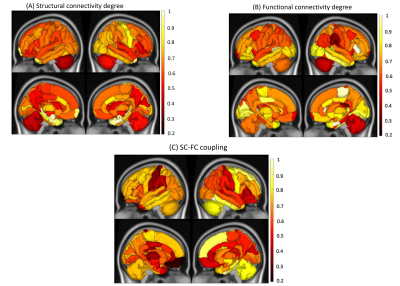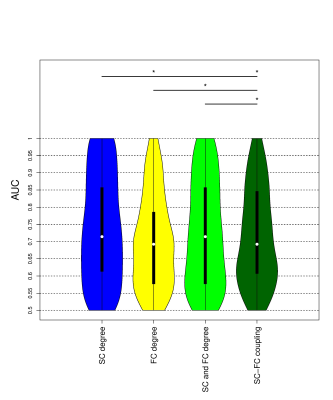Ceren Tozlu1, Keith Jamison1, Susan Gauthier1,2,3, and Amy Kuceyeski1
1Department of Radiology, Weill Cornell Medicine, New York, NY, United States, 2Judith Jaffe Multiple Sclerosis Center, Weill Cornell Medicine, New York, NY, United States, 3Department of Neurology, Weill Cornell Medicine, New York, NY, United States
1Department of Radiology, Weill Cornell Medicine, New York, NY, United States, 2Judith Jaffe Multiple Sclerosis Center, Weill Cornell Medicine, New York, NY, United States, 3Department of Neurology, Weill Cornell Medicine, New York, NY, United States
The structural connectivity degree as well as the structural and functional connectome coupling are important predictors of disability in multiple sclerosis. Damage to SC, particularly in the right parsorbitalis, thalamus, and parahippocampal is a hallmark of disability in MS.

Figure 1: The relative Wilcoxon rank-sum test statistics that were computed to compare a) SC degree, b) SC degree, and c) SC-FC coupling between impaired vs not-impaired people with MS. Higher relative statistic value indicates that the variable in this region was greater in the impaired people with MS as compared to not-impaired people with MS.

